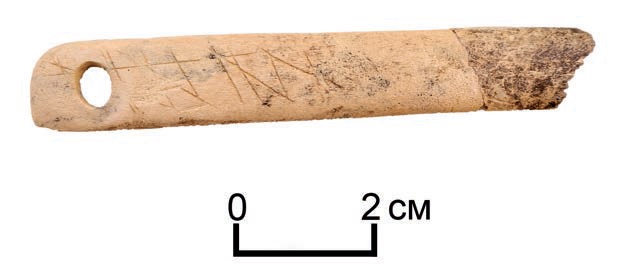Horn objects with tamga signs: based on the materials of the Xianbi burials of the Berel necropolis
DOI:
https://doi.org/10.52967/akz2022.3.17.32.42Keywords:
archaeology, Kazakh Altai, Berel, Xianbi, tamga signs, horn objectsAbstract
Currently, monuments of the "transitional period" are being actively developed in Kazakhstani archaeology, reproducing the heritage of previously unnoticed, but one of the unique historical and cultural communities of steppe Eurasia - the Hun–Xianbians. Starting from 2015 and up to the present time, about 70 monuments of this period have been identified and studied by domestic specialists on the territory of the Kazakh Altai. Among the finds are two horn onlays with tamga-like signs. Bone or horn onlays with tamgas or runic inscriptions are found in the Turkic monuments of the Mountainous and Mongolian Altai, some of them are comparable to the letters of famous runic inscriptions or ethnic tamgas of medieval peoples of Eurasia. Tamga-like signs of onlays from object No. 113 of the Berel necropolis differ in that they do not resemble any of the known letters or tamga. Nevertheless, traceological studies show that these are not just traces of their use or accidental scratches, but specially engraved symbols, the meaning of which is not yet completely clear to us. Perhaps they are spells for good luck or some magical symbols that were important for the owner of these products.
References
Gavrilova, A. A. 1965. Mogilnik Kudyrge kak istochnik po istoriy altayskih plemyon (Kudyrge burial ground as a source on the history of the Altay tribes). Moscow; Leningrad: “Nauka” Publ. (in Russian).
Dashkovskiy, P. K., Meykshan, I. A. 2015. In: Dashkovskiy, P. K. (ed.). Elita v istorii drevnih i srednevekovyh narodov Evrazii (Elite in History of Ancient and Medieval peoples of Eurasia). Barnaul: Altay University Publ., 99-107 (in Russian).
Kubarev, G. V. 2005. Kultura drevnih tyurok Altaya (po materialam pogrebalnyh pamyatnikov). Culture of the Ancient Turks of the Altay (based on the funeral monuments). Novosibirsk: Institute of archaeology and ethnography Publ. (in Russian).
Kuznetsov, N. A. 2014. In: Shirin, Yu. V. (ed.). Kuznetskaya starina (Kuznetsk Antiquity). Vol. 6. Novokuznetsk: “Kuznetskaya krepost” Publ., 59-73 (in Russian).
Ovchinnikova, B. B. 1990. Tyurkskie drevnosti Sayano-Altaya v VI–X vekah (Turkic antiquities of Sayan-Altay in the 6th–10th centuries). Sverdlovsk: Ural State University Publ. (in Russian).
Sadykov, T. R. 2017. In: Teoriya i praktika arheologicheskih issledovaniy (Theory and Practice of Archaeological Research), 2, 47-59 (in Russian).
Samashev, Z., Bazylhan, N., Samashev, S. 2010. Drevnetyurkskie tamgi (Ancient turkic tamga-signs). Almaty: Abdi company (in Russian, in Kazakh, in English).
Samashev, Z., Zhuniskhanov, А. 2021. In: Kazakstan arheologiyasy (Kazakhstan Archeology), 3, 146–153. DOI: 10.52967/akz2021.3.13.146.153 (in Kazakh).
Samashev, Z., Kariev E., Aleksandrov, S., Ahmadiev, Zh., Kiyasbek, G., Tolegenov, E., Samashev, S., Erbolatov, S. 2018. In: Akmetov, D. (ed.). Altay – tүrkі alemіnіn altyn besіgі (Altai is the “cradle” of the Turkic world). Oskemen: “Shygys akparat” Publ., 15-20 (in Russian).
Samashev Z., Kariev E.M., Zhirindinova K.R., Tolegenov E.T. et al. 2018. In: Archive of the Kazakh research institute of culture (in Russian).
Samashev, Z., Kariev, E.M., Erbolatov, S.E. 2019. In: Khabdulina, M. K. (ed.). Margulan reading–2019. Nur-Sultan: L.N. Gumilyov Eurasian National University, 385-393 (in Russian).
Fedorov, V.K. 2013. In: Rossiyskaya arheologiya (Russian archaeology), 44-61 (in Russian).
Cassen, S., Grimaud, V., Lescop, L., Morel, D., Querré, G. 2014. In: Archeologia e Calcolatori Supplemento 5, 47-59 (In French).
Ishjamts, N. 1994. In: Harmatta, J., Puri, B. N., Etemadi, G. F. (eds.). History of Civilizations of Central Asia. Paris: UNESCO Publ., 151-169 (In English).
Liu Mau-Tsai. 1958. Die chinesischen Nachrichten zur Geschichte der Ost-Türken (T’u-küe). Wiesbaden: Otto Harrassowitz (In Deutsch).
Plisson, H. 2015. In: Lozovskaya, O. V., Lozovski, V. M., Girya, E. Yu. (eds.). Traces in the history. Saint Petersburg: Institute for the History of Material Culture of the RAS, 218-233 (In English).

Downloads
Published
How to Cite
Issue
Section
License
Copyright (c) 2022 Самат Самашев

This work is licensed under a Creative Commons Attribution-NonCommercial 4.0 International License.






